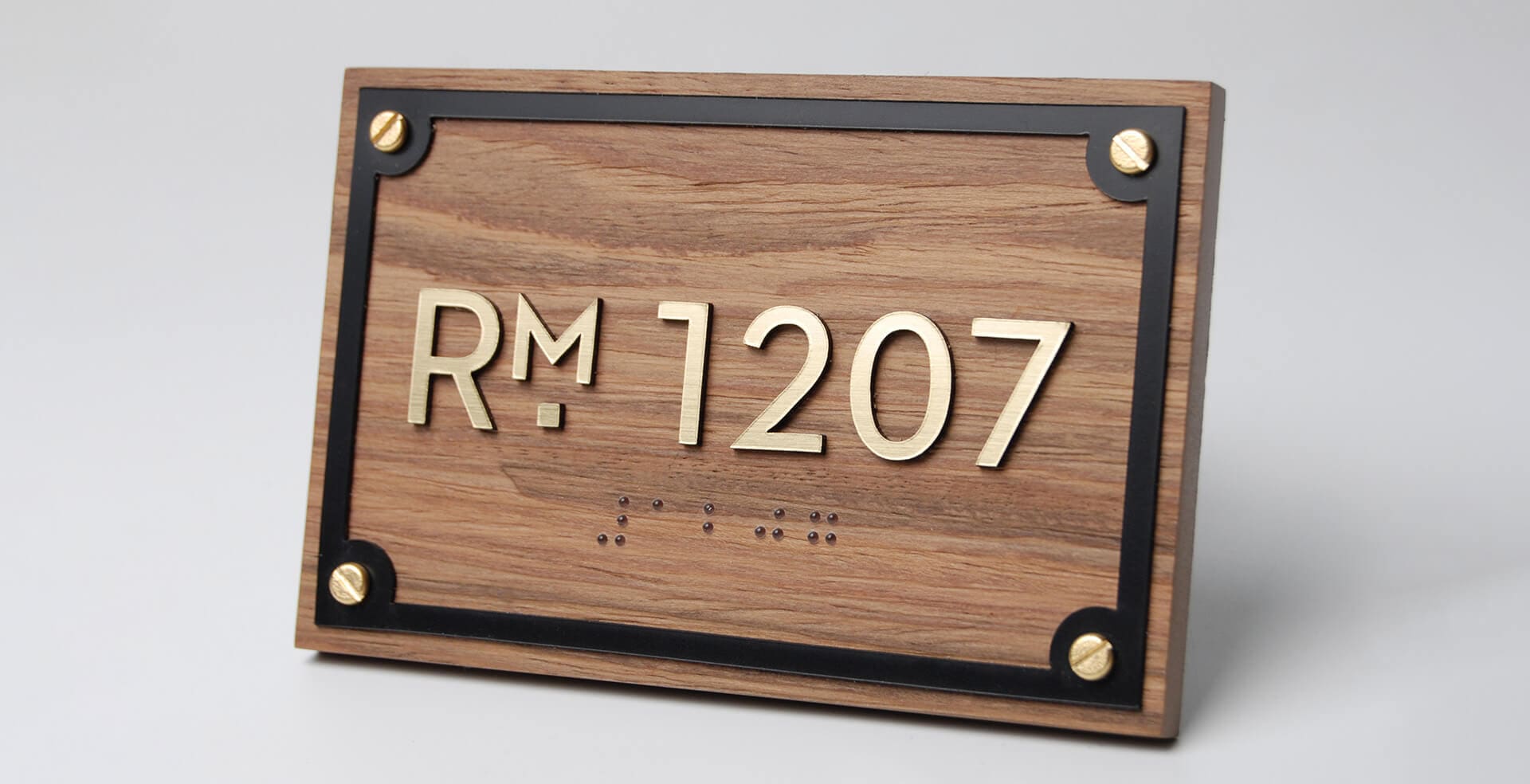ADA Signage Installation Best Practices

The Americans with Disabilities Act (ADA) has set forth guidelines to ensure that public spaces are accessible and accommodating to everyone, regardless of their physical abilities. One of the critical components of these guidelines pertains to ADA-compliant signs. These signs are essential for making spaces navigable for people with disabilities.
However, merely having ADA signs isn’t enough; they need to be installed correctly to serve their purpose. In this article, we’ll explore the best practices for ADA signage installation.
Correct Mounting Height
One of the primary considerations when installing ADA signs is the mounting height. The baseline of the tactile characters on the sign should be mounted between 48 inches minimum and 60 inches maximum above the finish floor or ground. This ensures that the signs are easily reachable and readable by individuals, whether they are standing or using a wheelchair.
Proximity to Doorways
For room identification, ADA signs should be installed on the latch side of the door. If there isn’t enough wall space on the latch side due to architectural or functional reasons, the sign can be placed on the nearest adjacent wall.
Clear and Unobstructed Path
Ensure that the area around the ADA signs is free from obstructions. This ensures that individuals, especially those using mobility aids like wheelchairs or walkers, can approach and read the sign without any hindrance.
Consistent Installation Across Facilities
For ease of navigation and a consistent user experience, ADA signs should be installed uniformly across a facility. This means that if you’re placing a particular type of sign at a specific height in one area, it should be consistent throughout the building or complex.
Use of Braille
ADA signs that identify rooms and spaces should include Grade 2 Braille to assist individuals with visual impairments. The Braille should be placed directly below the corresponding text.
Ensure Proper Contrast
For ADA signs to be effective, there should be a high contrast between the background and the characters. This ensures that the signs are easily readable even under varying lighting conditions.
Regular Maintenance and Inspection
Like all other components of a facility, ADA signs require regular maintenance. Periodically inspect the signs to ensure that they are in good condition, free from wear and tear, and are still adhering to ADA guidelines. If a sign is damaged or becomes non-compliant, it should be replaced promptly.
Purchase ADA Signage with Identity Group
Ensuring that your facility is ADA compliant is not just about adhering to the law; it’s about creating an inclusive environment for all. And when it comes to ADA signs, their design and installation play a crucial role in this endeavor.
For those looking to ensure their spaces are both compliant and aesthetically pleasing, Identity Group is the answer. As a premier sign company, Identity Group has worked hard to provide customers with functional and beautifully-designed ADA signs. With a commitment to quality, functionality, and design, you can trust Identity Group to make your spaces accessible to everyone.
